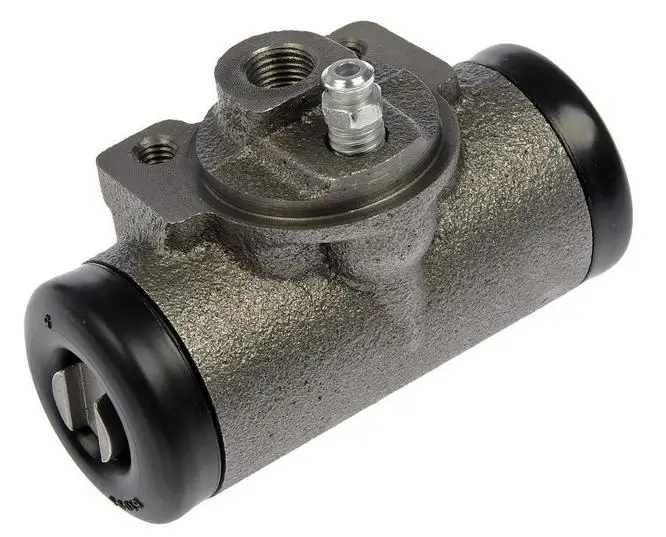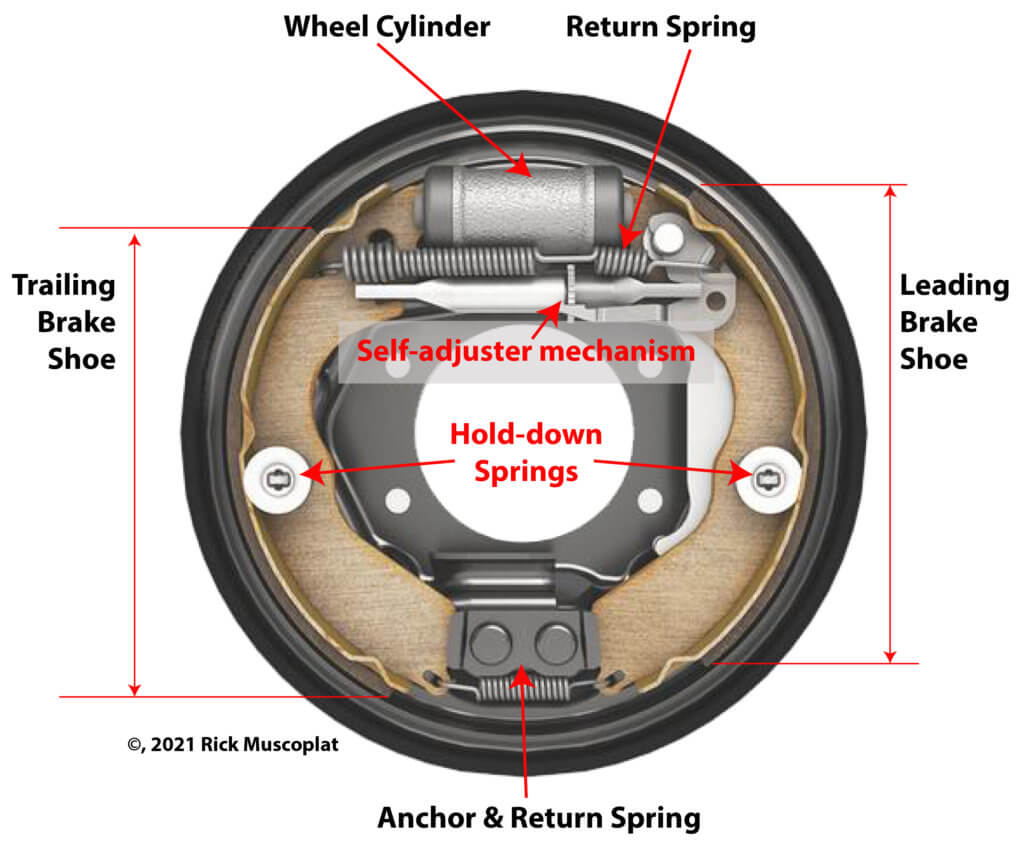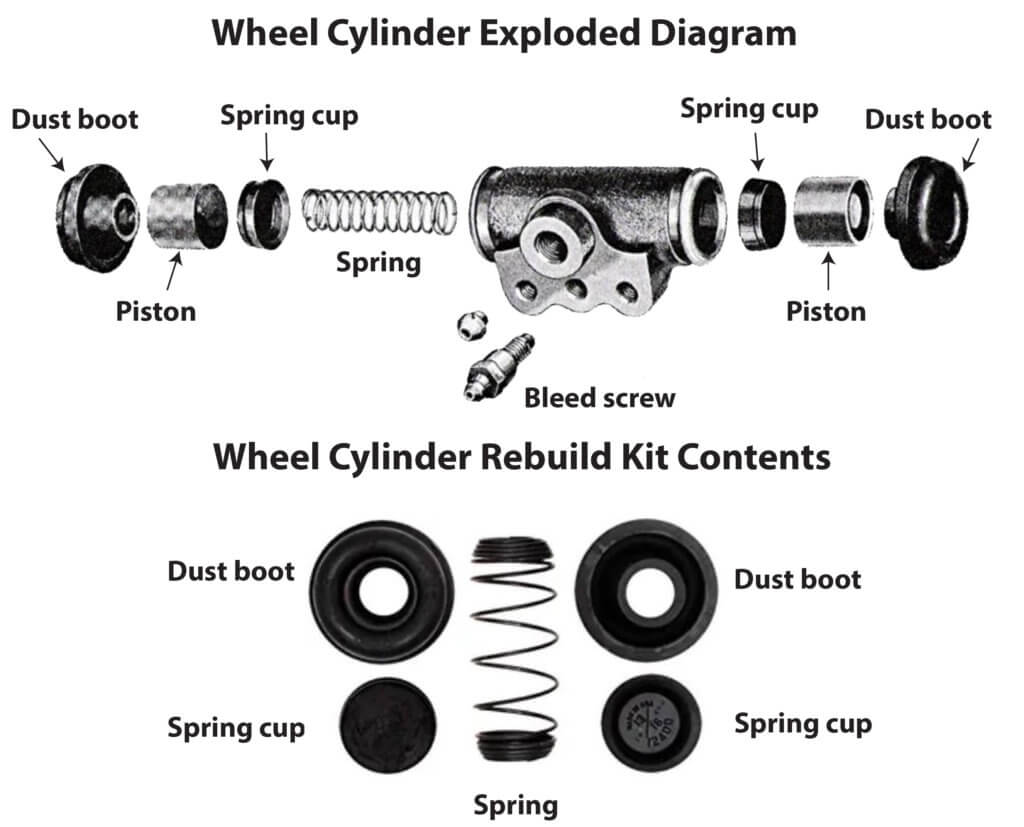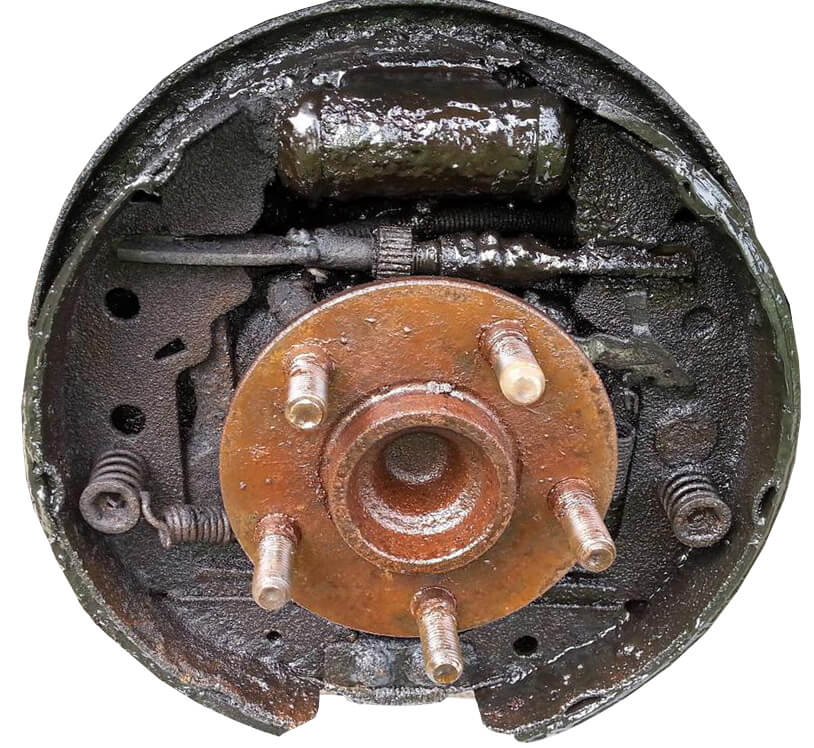Brake Wheel Cylinder
Brake Wheel Cylinder — What it does and how it fails
Wheel cylinders are used in vehicle with drum brakes. Before the  introduction of disc brakes, drum brakes were used on all four wheels. Once disc brakes became standard, many carmakers continued to use drum brakes only on the rear wheels. This decision was based on cost and the fact that the front brakes applied 80% of the braking force and rear brakes only perform about 20% of the total braking in a disc/drum braking system.
introduction of disc brakes, drum brakes were used on all four wheels. Once disc brakes became standard, many carmakers continued to use drum brakes only on the rear wheels. This decision was based on cost and the fact that the front brakes applied 80% of the braking force and rear brakes only perform about 20% of the total braking in a disc/drum braking system.
The brake wheel cylinder is responsible for applying outward pressure to move the brake shoes against the brake drum.
However, with the introduction of stability and traction control, carmakers began to switch to disc brakes on all four wheels because the new control systems apply braking more evenly to prevent loss of control.
Brake wheel cylinder — How it works

 As you apply the brakes, high pressure brake fluid presses against the rubber spring cup inside the wheel cylinder. That, in turn applies pressure to the steel piston, forcing it outward. The piston contacts the brake shoes and moves them against the brake drum, causing the vehicle to stop. The dust seals at each end prevent brake and road dust from entering the wheel cylinder bore and causing wear.
As you apply the brakes, high pressure brake fluid presses against the rubber spring cup inside the wheel cylinder. That, in turn applies pressure to the steel piston, forcing it outward. The piston contacts the brake shoes and moves them against the brake drum, causing the vehicle to stop. The dust seals at each end prevent brake and road dust from entering the wheel cylinder bore and causing wear.
The spring constantly applies pressure to the spring cups to keep them in place when the brake aren’t applied.
Wheel cylinder failure
Brake fluid leaks
Over time, the lip seals on the spring cups can

Leaking wheel cylinder
wear and leak. This is especially true if the owner doesn’t change brake fluid at the proper intervals. Brake fluid consists of a base fluid that never wears out. But brake fluid also contains anti-corrosive additives that wear out over time. Once those are used up, corrosion sets in and the wheel cylinder spring cups, piston and bore begin to wear.
Once the spring cups wear, they leak brake fluid past the piston and out of the dust seals. In extreme leak cases, the brake fluid can contaminate the brake shoes.
Failing Wheel cylinder symptoms
You notice brake fluid on your wheels
Your pedal feels spongy or goes to the floor when you apply the brakes.
You notice wet areas on the dust seals and brake dust accumulation around the seal.
The rear brakes lock up when applied
How to rebuild a wheel cylinder
Before you can rebuild a wheel cylinder you must measure the clearance between the steel piston and the wheel cylinder bore using a go/no-go gauge. If the clearance exceeds specifications, you must replace the wheel cylinder.
If the piston-to-bore clearance with within specifications, you can rebuild the wheel cylinder using a rebuilding kit and brake hone.
Step 1. Remove the dust seals, pistons, spring cups and piston
Step 2. Use a clean rag to wipe all dirt and grit out of the cylinder bore. Then flush with fresh brake fluid to remove any remaining debris
Step 3. Dip the brake hone in fresh brake fluid. Compress the spring loaded brake hone arms and insert into the cylinder bore. Spin the hone at a slow speed with a drill while moving the hone from one end of the cylinder to the other. This will create a cross hatch pattern and prevent uneven wear inside the bore.
Step 4. Wipe the cylinder with a clean rag. Then flush with fresh brake fluid.
Step 5. Coat the new spring, spring cups, and pistons with fresh brake fluid. Install those components into the bore. Then install the dust seals (no brake fluid on the dust seals).
For information on wheel cylinder replacement cost, see this article
©, 2021 Rick Muscoplat
Posted on by Rick Muscoplat